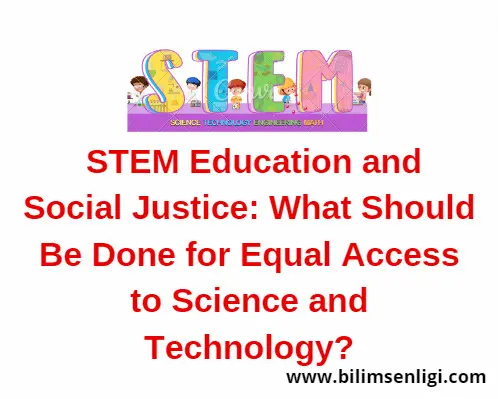
Promoting equal access to STEM (Science, Technology, Engineering, and Mathematics) education is crucial for fostering social justice and ensuring that individuals from all backgrounds have the opportunity to engage in and benefit from advancements in science and technology.
STEM Education and Social Justice
Here are several key strategies to address and promote equal access to STEM education:
- Early Exposure and Outreach Programs:
- Implement outreach programs that expose students from diverse backgrounds to STEM disciplines at an early age.
- Collaborate with schools, community organizations, and industry partners to provide hands-on STEM experiences.
- Inclusive Curriculum Design:
- Develop STEM curricula that reflect diverse perspectives, cultures, and contributions.
- Integrate real-world applications and examples that resonate with students from various backgrounds.
- Teacher Training and Diversity:
- Provide professional development for educators to foster inclusive teaching practices.
- Encourage and support the recruitment of diverse teachers in STEM fields.
- Community Engagement:
- Establish partnerships with community organizations to bring STEM resources and programs to underserved communities.
- Conduct community workshops and events to raise awareness about the importance of STEM education.
- Access to Technology:
- Ensure that students, regardless of socioeconomic status, have access to technology and the internet.
- Advocate for initiatives that provide laptops, tablets, and other essential tools to students in need.
- Scholarship and Financial Aid Programs:
- Create scholarship and financial aid programs specifically for underrepresented groups in STEM.
- Support initiatives that reduce financial barriers for students pursuing STEM degrees.
- Mentorship Programs:
- Establish mentorship programs connecting students with professionals in STEM fields from similar backgrounds.
- Promote role models and highlight success stories from underrepresented groups in STEM.
- Culturally Relevant Pedagogy:
- Incorporate culturally relevant teaching methods that acknowledge and respect the diverse backgrounds of students.
- Create an inclusive learning environment where all students feel valued and supported.
- STEM Career Awareness:
- Increase awareness of diverse STEM careers through workshops, seminars, and industry partnerships.
- Highlight the variety of career paths within STEM fields to inspire students from different backgrounds.
- Advocacy for Inclusive Policies:
- Advocate for policies that promote diversity and inclusion in STEM education at local, regional, and national levels.
- Encourage institutions to adopt inclusive practices in admissions and support services.
- Addressing Unconscious Bias:
- Provide training for educators, administrators, and professionals to recognize and address unconscious biases.
- Foster an environment that is welcoming and supportive of diversity in STEM.
- Monitoring and Evaluation:
- Regularly assess and monitor the impact of diversity and inclusion initiatives in STEM education.
- Use data to identify areas for improvement and refine strategies to ensure effectiveness.
By implementing these strategies, educators, policymakers, and stakeholders can work together to create a more equitable and inclusive STEM education ecosystem. This approach not only benefits individuals by providing equal opportunities but also contributes to the advancement of science and technology through a diverse and talented workforce.








